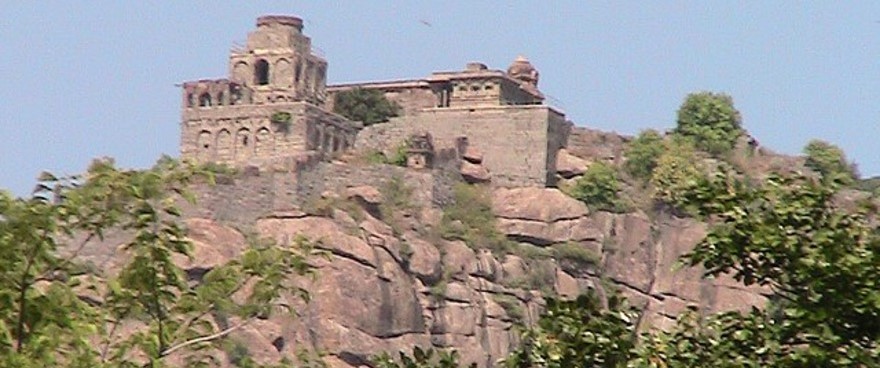Gingee Fort – Viluppuram

Overview & Location of Gingee Fort
Gingee Fort lies in the Viluppuram District, close to the Union Territory of Puducherry and at a distance of around 160 kilometres from Chennai. Gingee is alternately called as Senji, Jinji, Chenji or Senchi Fort.
It was called the “Troy of the East” by the British and ranked as the “most impregnable fortress in India” by the Maratha King Shivaji. The Fort is administered and maintained currently by the Archaeological Survey of India. The fort attracts a lot of tourists throughout the year.
Image Attribute : Brownycat
The Gingee Fort – Etymology
- It was called Badshabad by The Bijapur Nawabs hold the fort from about 1660 to 1677 AD.
- It was called Chandry or Chindy by their successors, the Marathas.
- It was named Nusratgadh by the Mughals, who captured the fort in 1698 AD.
- It came to be known as Gingee or Jinji by the English and the French.
The Gingee Fort – Legend
The Fort is associated with the tragic story of Raja Tej Singh who was also known as Thesingu Raasan. Young and brave Tej Singh revolted against the Nawab of Arcot and was killed in the war that followed. His life and brave but tragic end was praised in numerous ballads.
History of Gingee Fort
Gingee came into the hands of various ruling dynasties of South India starting from the Cholas.
- Gingee was the place of Jains in the beginning.
- The site of the small fort was originally built by the Chola dynasty during the 9th century AD
- The fort was later modified by Kurumbur and again by Vijayanagar Empire during the 13th century and 14th century.
- Strong and tall fort walls, temples on the plains were built using granite under the Nayakka rulers (from the end of 14th century AD for 150 years).
- Taking advantage of the frequent skirmishes between the Nayakas of Gingee, Madurai and Tanjore, the Bijapur Sultans captured Gingee.
- It was further strengthened by the Marathas under the leadership of Shivaji in 1677 AD.
- Gingee fort was then captured by the Mughal General Zulfiqar Khan.
- The fort subsequently came under the rule of the French and British.
The rule of foreigners and their indifference towards the maintenance of the fort has left the place as a memorial for its admirers.
Architecture of Gingee Fort
The enormous structure of the fort has been built at the most strategic location making it difficult for enemies to enter the premises. The Gingee Fort complex is on three hillocks: krishnagiri to the north, Chandrayandurg to the southeast and Rajagiri to the west. The complex houses a seven-storeyed Kalyana Mahal (marriage hall), granaries, a temple dedicated to its presiding deity Chenjiamman. The fortification of the complex has a sacred pond known as Aanaikulam.
The Gingee Fort – Timings & Traveller Tips
The Fort remains open on all days from 9:00 AM to 4:30 PM. The entrance fee is Rs. 5 per person, Rs. 100 per head for foreign citizens and free for children below the age of 15 years.
It is advisable for travelers to equip themselves with required snacks and water, umbrellas or caps to avoid the scorching heat. Visiting the fort during weekdays is advisable to dodge heavy crowd. It is ideal to visit the fort during the winter months of November to February.
Trekking to the fort makes the trip more adventurous. The fort encompasses exquisite interiors and spots worth exploring. The fort makes a good place for photography whilst experiencing its antiquity.
How to reach Gingee Fort
The fort can be easily reached by taking a cab or private buses. The nearest railway station is at Tindivanam (around 31 kilometres away) and nearest airport is at Chennai (136 kilometres away).
